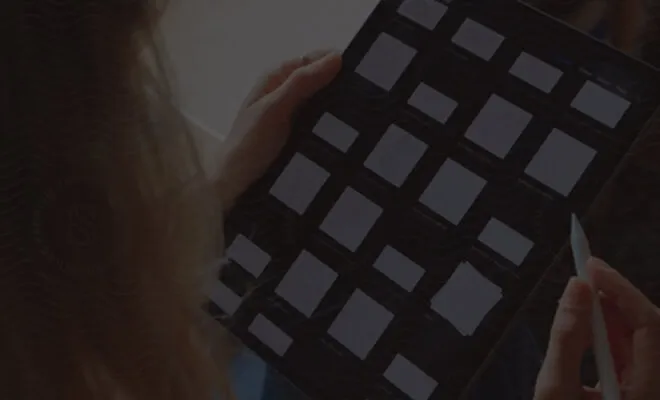Create PDF teleprompter using Swift for iOS
Use the continuous scrolling page view with a timer function to automatically scroll through a document, using touch events to pause scrolling. Get additional resources by visiting our guide on configuring scroll directions and page transitions in our iOS viewer.
//// Copyright © 2021-2025 PSPDFKit GmbH. All rights reserved.//// The Nutrient sample applications are licensed with a modified BSD license.// Please see License for details. This notice may not be removed from this file.//
import PSPDFKitimport PSPDFKitUI
class TeleprompterExample: Example { override init() { super.init() title = "Teleprompter example" category = .subclassing priority = 30 }
override func invoke(with delegate: ExampleRunnerDelegate?) -> UIViewController { let document = AssetLoader.document(for: .annualReport) let pdfViewController = AutoScrollPDFViewController(document: document)
return pdfViewController }}
class PauseAutoScrollGestureRecognizer: UIGestureRecognizer { override init(target: Any?, action: Selector?) { super.init(target: target, action: action) cancelsTouchesInView = false }
override func touchesBegan(_ touches: Set<UITouch>, with event: UIEvent) { if touches.count != 1 { state = .failed return }
state = .began }
override func touchesEnded(_ touches: Set<UITouch>, with event: UIEvent) { state = .ended }}
private class AutoScrollPDFViewController: PDFViewController, UIGestureRecognizerDelegate { var scrollTimer: Timer? var pauseAutoScrollGestureRecognizer: PauseAutoScrollGestureRecognizer? var scrollingPaused = false
override func commonInit(with document: Document?, configuration: PDFConfiguration) { super.commonInit(with: document, configuration: configuration) updateConfiguration(builder: { builder in builder.pageTransition = .scrollContinuous builder.scrollDirection = .vertical }) }
override func viewDidLoad() { super.viewDidLoad() pauseAutoScrollGestureRecognizer = PauseAutoScrollGestureRecognizer(target: self, action: #selector(handlePauseAutoScroll(_:))) pauseAutoScrollGestureRecognizer?.delegate = self if let pauseAutoScrollGestureRecognizer { documentViewController?.view.addGestureRecognizer(pauseAutoScrollGestureRecognizer) } }
override func viewDidAppear(_ animated: Bool) { super.viewDidAppear(animated) scrollTimer = Timer.scheduledTimer(timeInterval: 0.01, target: self, selector: #selector(scroll), userInfo: nil, repeats: true) }
override func viewWillDisappear(_ animated: Bool) { super.viewWillDisappear(animated) scrollTimer?.invalidate() scrollTimer = nil }
@objc func scroll() { if scrollingPaused { return }
guard let documentViewController else { return } // The layout object knows how many spreads we currently have: let numberOfSpreads = documentViewController.layout.numberOfSpreads let lastSpreadIndex = CGFloat(numberOfSpreads > 0 ? numberOfSpreads - 1 : 0)
// We scroll by updating the continuous spread index as long as we can: let continuousSpreadIndex: CGFloat = documentViewController.continuousSpreadIndex + 0.001 if continuousSpreadIndex <= lastSpreadIndex { documentViewController.continuousSpreadIndex = continuousSpreadIndex } }
@objc func handlePauseAutoScroll(_ tapGestureRecognizer: UITapGestureRecognizer?) { if tapGestureRecognizer?.state == .began { scrollingPaused = true }
if tapGestureRecognizer?.state == .ended { scrollingPaused = false } }
func gestureRecognizer(_ gestureRecognizer: UIGestureRecognizer, shouldRecognizeSimultaneouslyWith otherGestureRecognizer: UIGestureRecognizer) -> Bool { // We'll ignore long presses but allow everything else, such as scrolling. if gestureRecognizer == pauseAutoScrollGestureRecognizer && (otherGestureRecognizer is UILongPressGestureRecognizer) { return false }
return true }}This code sample is an example that illustrates how to use our SDK. Please adapt it to your specific use case.




